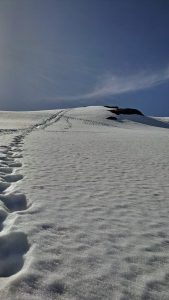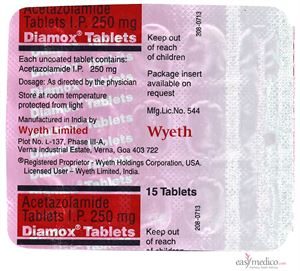Recently, a close friend of mine went for a high altitude trek but he had to cancel it mid-way because he got hit by Acute Mountain Sickness (AMS). My first encounter with AMS was when I was trekking to Pindari Glacier in Uttarakhand back when I was in High School. Luckily, my trek leader was very experienced and provided me with right kind of treatment and somehow I managed to finish the trek. Since that day I always carry medicine for AMS whenever I’m travelling. But the recent incident made me realize that there is still need of awareness for this commonly occurring sickness while travelling.
So before you hit the road this trekking season, this is what you NEED to know:
What is Acute Mountain Sickness?
Acute Mountain Sickness or AMS is the initial, and most common, form of altitude sickness caused by prolonged exposure to lesser oxygen on high altitudes (8000ft. or more). It is quite similar to a hangover; symptoms include headache, nausea, and fatigue. Some people are only slightly affected, others feel awful.
AMS can develop further into more complicated sickness called HAPE (High Altitude Pulmonary Edema) and HACE (High Altitude Cerebral Edema). Pulmonary Edema is fluids getting into lungs and Cerebral Edema is swelling of the brain. HAPE and HACE occur to only 1-2% of people going to higher altitudes but it accelerates very quickly & can get fatal within hours.
What causes Acute Mountain Sickness?

As you go higher the air pressure gets lower. This means you breathe in less oxygen than needed to keep the body functional. As your body gets less oxygen, it adapts to make for the less amount of oxygen by breathing deeper and faster. This change takes time to happen and your body starts showing symptoms which are recognized as Acute Mountain Sickness.
Although minor symptoms like breathlessness may start occurring after 5000ft., AMS is likely to occur only after around 8000ft.; and gets severe as you go higher without proper acclimatization time.
Acclimatization is when the body slowly adapts to lower oxygen level. Different people acclimatize at a different speed. Usually, after 10,000ft., it is advised sleeping no more than a 1000ft higher altitude. Going higher during the day is okay as long as you go down to sleep.
Symptoms of Acute Mountain Sickness
The primary symptom is usually headache, followed by nausea and even vomiting. The other symptoms include lethargy, lightheadedness, dizziness and poor appetite. This can further lead to swelling of hands, face, and feet. It is important to understand that uneasy feeling in stomach, lightheadedness, and dizziness can occur without any headache. Don’t assume it to be just a bad stomach day.

A lot of people think that headache is a normal occurring on higher altitude or while travelling. NO, it’s not. While travelling, a headache can be caused by exertion or dehydration as well. To make sure it is AMS, take triple one test.
Triple One Test: Drink one liter of water, take one tablet of Disprin and wait for one hour.
If after one hour your headache goes away, it was just headache. But if still persist, its sign that you are hit by AMS.
How to deal with it?
Prevention is better than cure, and it can get truer for AMS. Follow these simple steps to avoid getting hit by AMS:
– Drink plenty of water (5-6 liters/day). Hydration helps, especially because you are exerting yourself so much.
– Acclimatize. Take enough rest when you reach the camp.
– Ascend slowly. There is no need to over-exert yourself by walking fast.
– Do a preventive course of Diamox (Acetazolamide).
More importantly, DON’T DENY or HIDE. If you start feeling any of these symptoms, talk to the people you are travelling with or your trek leader and seek help.
Use of Diamox

The best possible way to avoid AMS is a preventive course of Diamox. Start taking 125mg (half a tablet) twice a day at an interval of 12 hours. You can start taking the course 2 days prior to reaching base camp and increase it to 250mg (one tablet) at every 12 hours; continue until the end of the trek. This highly reduces the chances of AMS.
How Diamox works
Diamox makes the body to excrete bicarbonate in the blood. This makes the blood more acidic. The acidic blood believes that it has more carbon dioxide in it. So, the body starts to breathe deeper and faster, to get rid of that carbon dioxide. Meanwhile taking in more oxygen. The increased oxygen speeds up acclimatization reducing any chances of AMS.
Diamox doesn’t cure anything; it only accelerates acclimatization.
What if Diamox doesn’t help?
Take another tablet of Diamox and wait for 3-4 hours. If you don’t start feeling better and the symptoms persist, start descending to 7000-8000ft. Struggling with the symptoms can lead to much severe conditions of HAPE and HACE, which could be fatal. DESCEND! DESCEND! DESCEND!
** Diamox is a sulfa based drug. Please consult your physician before taking it **
(There is another drug called Dexamethasone or Dex. Dex is a steroid which is taken in rare and extreme cases, HAPE or HACE. It buys you time, 5-6 hrs, to ascend back to 7000-8000ft.)
Facts and Myths:
– AMS has nothing to do with your experience of prior travelling to higher altitudes. An experienced traveller has as much possibility of getting hit by AMS as a first timer.
– AMS is more prone in Indian and Nepal Himalayas because the climb is more rapid. Most of the times it is not possible to camp after every 1000ft. and hence there are more chances of you getting hit by AMS.
– It takes time to hit you. It is not essential that you get hit on the peak; you may start showing symptoms after 3-4 hours of reaching the peak.
– Age has nothing to do with AMS.
– AMS won’t judge you by the size of dumbbells you pick in the gym. Of course, your fitness will help you on a trek but your fitness level has nothing to do with the possibility of you getting hit by AMS.
– Smoking and drinking on higher altitude increase the chances of AMS.
Cover picture by Razi Ul Hasnain



